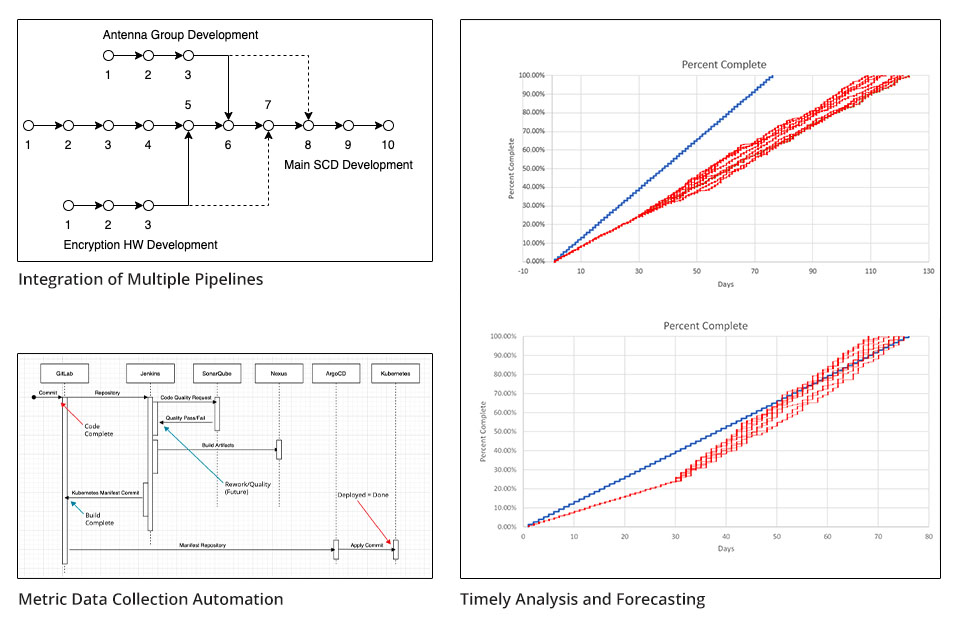2022 Research Review / DAY 3
Automated Continuous Estimation for Pipelines of Pipelines
The DoD wants to transform defense acquisitions and enable rapid and iterative delivery of software capability through new acquisition pathways and by exploiting DevSecOps. The emphasis on DevSecOps creates opportunities for increased automated data collection and analysis to significantly shorten feedback cycles and provide program information at the speed of relevance. Currently, lack of automation for collection, archiving (for ML), and analysis fails to match the release-feedback cadence.
... this project envisions instrumenting the complex software production environments typical of the DoD to continuously monitor the DevSecOps pipeline and use that data to continuously update estimates for cost, schedule, and quality.
Dr. William NicholsPrincipal Member of the Technical Staff

What’s more, the DevOps Research and Assessment (DORA) metrics typical of DevSecOps (lead time for change, deployment frequency, time to restore service, and change failure rate) may not be sufficient for complex DoD environments, particularly under the new Software Acquisition Pathway. At a minimum, current metrics are not causal, and they are connected to Ops rather than to program management decisions.
 The ultimate vision of this work is to provide program managers and other stakeholders a smart dashboard that displays timely, relevant, and correlated data on status, risks, cost, schedule, and quality without the latency and disruption of data calls.
The ultimate vision of this work is to provide program managers and other stakeholders a smart dashboard that displays timely, relevant, and correlated data on status, risks, cost, schedule, and quality without the latency and disruption of data calls.
To address this situation, this project envisions instrumenting the complex software production environments typical of the DoD to continuously monitor the DevSecOps pipeline and use that data to continuously update estimates for cost, schedule, and quality. The data will also be available for AI and ML. The ultimate vision is to provide program managers and other stakeholders with a smart dashboard that displays timely, relevant, and correlated data. They will use this dashboard to obtain status; evaluate risks; and predict cost, schedule, and quality without the latency and disruption of data calls.
We’re working to address basic but crucial questions, such as, “If x changes, how will that affect the overall program?” Presently, answers to these questions elude program managers of large complex cyber-physical development programs in a fast-paced Agile environment.
In Context
This FY2022–23 project
- codifies advanced continuous integration and continuous delivery (CI/CD) acquisition practices
- formalizes the development, integration, and use of models to advance software acquisition
- improves the efficacy of the software acquisition process to realize better performance and affordability
- aligns with the DoD software strategy to advance DevOps
Principal Investigator
Dr. William Nichols
Principal Member of the Technical Staff
SEI Collaborators
Luiz Antunes
DevOps Engineer
Rob McCarthy
DevOps Engineer
Dr. Chris Miller
Member of the Technical Staff—Senior Researcher
Julie Cohen
Senior Member of the Technical Staff
Melissa Ludwick
Member of the Technical Staff
Akia Williams
Senior Administrative Assistant